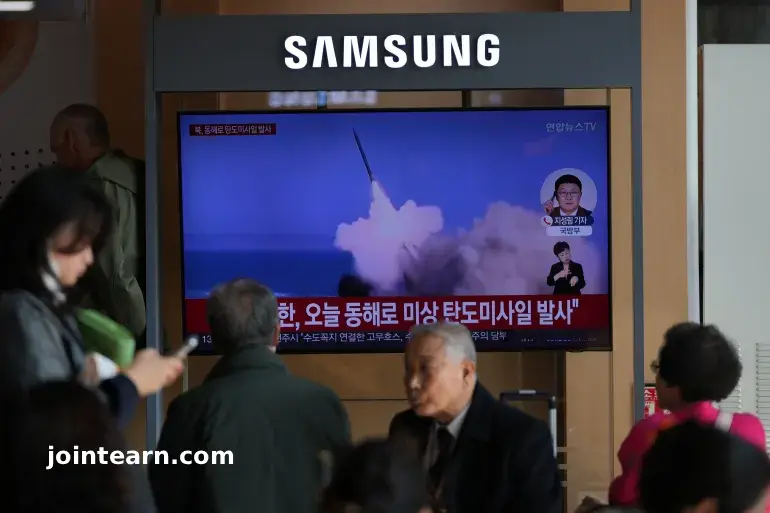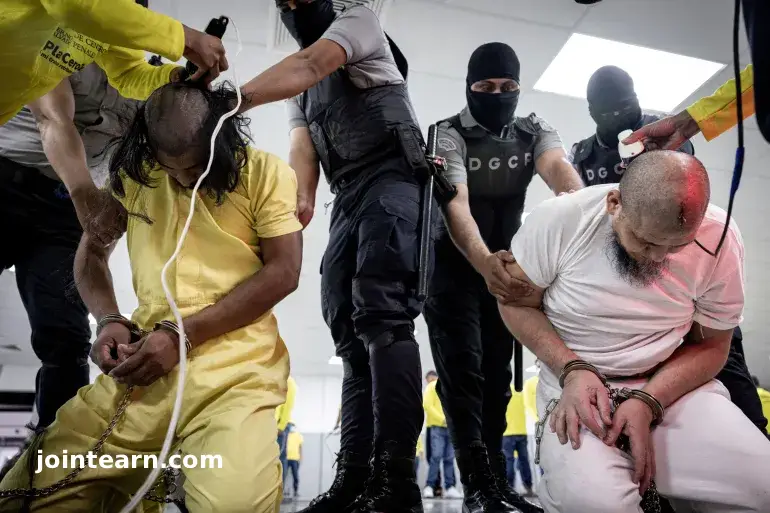
North Korea Launches Missile Toward East Sea After US–South Korea Talks
North Korea has launched at least one short-range ballistic missile toward its eastern waters, according to South Korea’s Joint Chiefs of Staff (JCS). The launch, confirmed early Friday, comes just days after United States Defense Secretary Pete Hegseth concluded a high-profile visit to Seoul for annual bilateral security talks.
Seoul’s JCS said the missile flew approximately 700 kilometers (435 miles) before splashing down in the East Sea, also known as the Sea of Japan.
The Japanese government also confirmed the launch, stating that the missile appears to have landed outside Japan’s exclusive economic zone (EEZ).
The test marks another act of defiance from Pyongyang amid ongoing military cooperation between the United States, South Korea, and Japan, and at a time when diplomatic communication with North Korean leader Kim Jong Un remains frozen.
Timeline of Recent Escalations
Friday’s missile launch follows a series of provocative military moves by Pyongyang.
Just four days earlier, South Korea reported that North Korea fired 10 rounds of artillery shells into its western waters, raising alarm across the Korean Peninsula.
The latest launch also comes a week after US President Donald Trump approved South Korea’s plan to develop a nuclear-powered submarine, a move that experts say will enhance Seoul’s naval defense capabilities and tilt the regional power balance.
According to a South Korean presidential official, Seoul plans to build the vessel domestically but has requested enriched uranium from the United States to fuel the reactor. If completed, this would make South Korea one of the few nations in the world operating nuclear-powered submarines.
Diplomatic Freeze and Failed Negotiations
Despite repeated calls from Washington and Seoul to resume dialogue, North Korea has refused to engage in talks since 2019, when negotiations with the Trump administration collapsed over sanctions relief and denuclearization demands.
Since taking office earlier this year, Trump and South Korean President Lee Jae Myung have publicly expressed interest in restarting dialogue with Kim Jong Un. However, the North Korean leader has reiterated his stance that Pyongyang’s nuclear status is “irreversible” and has rejected any preconditions requiring disarmament.
In a September speech, Kim declared that his nation remains committed to strengthening its “nuclear deterrent” while leaving the door open to talks only if the US drops its denuclearization policy.
North Korea Strengthens Ties With Russia and China
Friday’s missile test also coincides with deepening defense cooperation between North Korea and Russia, following Kim Jong Un’s September meeting with President Vladimir Putin.
According to North Korea’s state-run Korean Central News Agency (KCNA), Pak Yong Il, vice director of the Korean People’s Army General Political Bureau, met this week with Russian Vice Defense Minister Viktor Goremykin in Pyongyang.
KCNA reported that both sides discussed “expanding military and political cooperation”, describing the meeting as part of “deepened bilateral relations” between the two allies.
The latest developments come amid reports that North Korean troops are being deployed to assist Russia’s war in Ukraine.
South Korea’s National Intelligence Service (NIS) estimates that about 15,000 North Korean soldiers have been sent to Russia, with many casualties reported on the battlefield.
In addition, intelligence officials said that some 5,000 military construction workers have been dispatched to Russia since September to assist in rebuilding infrastructure damaged by the war.
Pyongyang’s Military Parade and Missile Showcase
Just weeks before this missile launch, Kim Jong Un oversaw a major military parade in Pyongyang, where North Korea showcased its most advanced weaponry, including a new intercontinental ballistic missile (ICBM).
The event, attended by senior delegations from Russia and China, was widely seen as a display of solidarity among the three nations and a warning to Washington and its allies.
North Korea’s ongoing weapons tests and military parades serve both as domestic propaganda and as strategic messages to the West, signaling that Pyongyang remains committed to expanding its nuclear and missile capabilities.
Regional Reaction: Heightened Security Alerts
South Korea and Japan have both boosted surveillance and readiness levels in response to the missile launch.
Tokyo’s defense ministry issued a brief alert to ships and aircraft operating in the East Sea, while Seoul’s military said it remains “fully prepared to respond to additional provocations.”
The United States Indo-Pacific Command (INDOPACOM) also condemned the launch, calling it a violation of UN Security Council resolutions and urging Pyongyang to return to diplomacy instead of provocation.
Analysis: What the Missile Launch Signals
Military analysts believe that North Korea’s latest missile test is part of a pattern intended to demonstrate deterrence and signal defiance to both Washington and Seoul following recent defense meetings.
“This is classic signaling behavior,” said Shin Beom-chul, a senior fellow at the Korea Research Institute for National Strategy. “Each time there is a high-level US–South Korea dialogue, Pyongyang responds with a missile test to remind the world it cannot be ignored.”
Others suggest the launch may also be a reaction to Seoul’s nuclear submarine project, which could shift the strategic balance under the sea.
Conclusion: Escalation and Stalemate
North Korea’s latest missile launch underscores a deepening military standoff in Northeast Asia, where efforts to restart peace talks have repeatedly failed.
With US–South Korea defense cooperation intensifying, Russia and North Korea strengthening ties, and China maintaining quiet support, the region risks sliding back into Cold War-style confrontation.
For now, Pyongyang appears determined to use missile tests and military posturing as leverage — signaling both defiance and desperation in an increasingly divided geopolitical landscape.


Leave a Reply